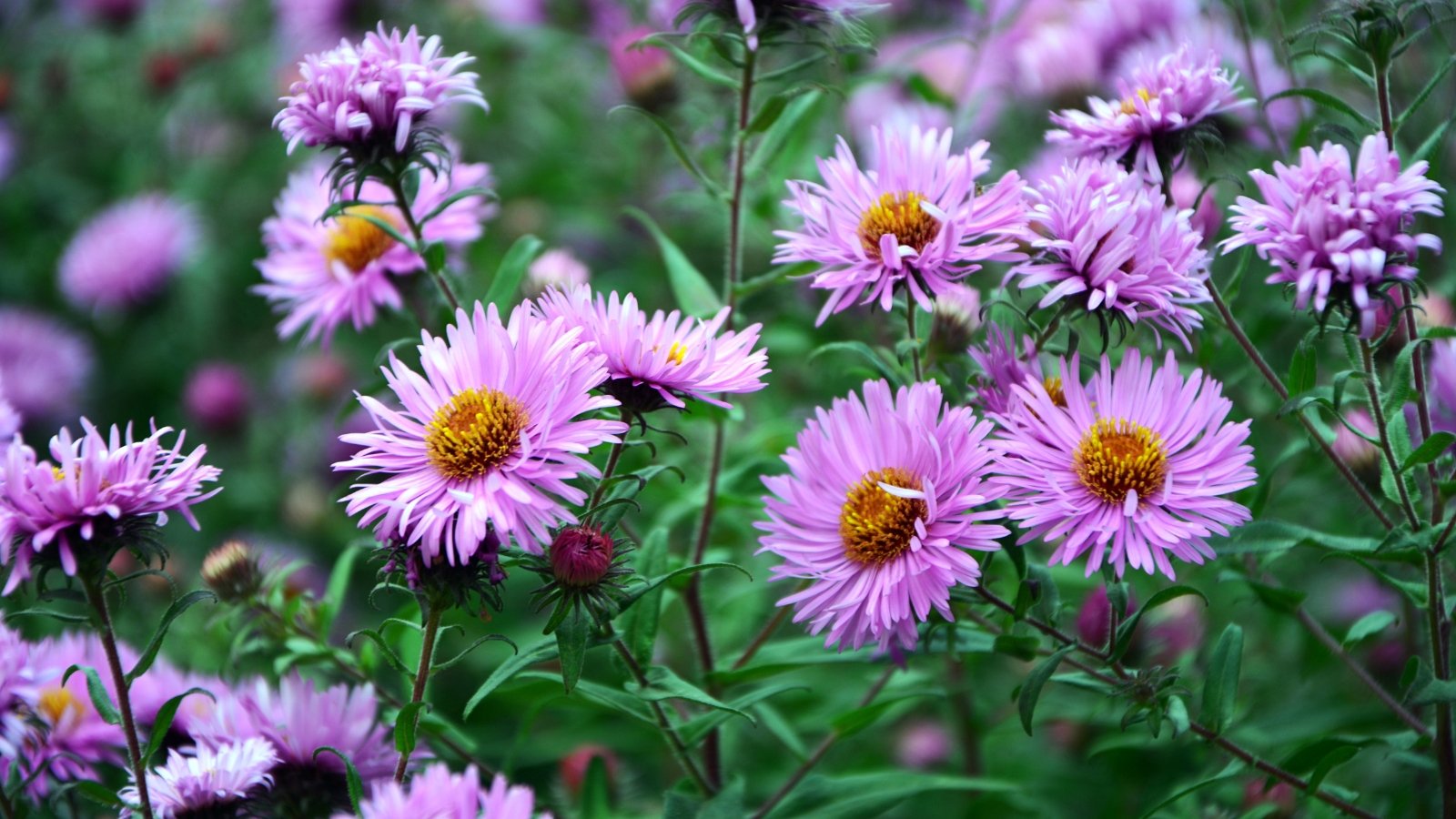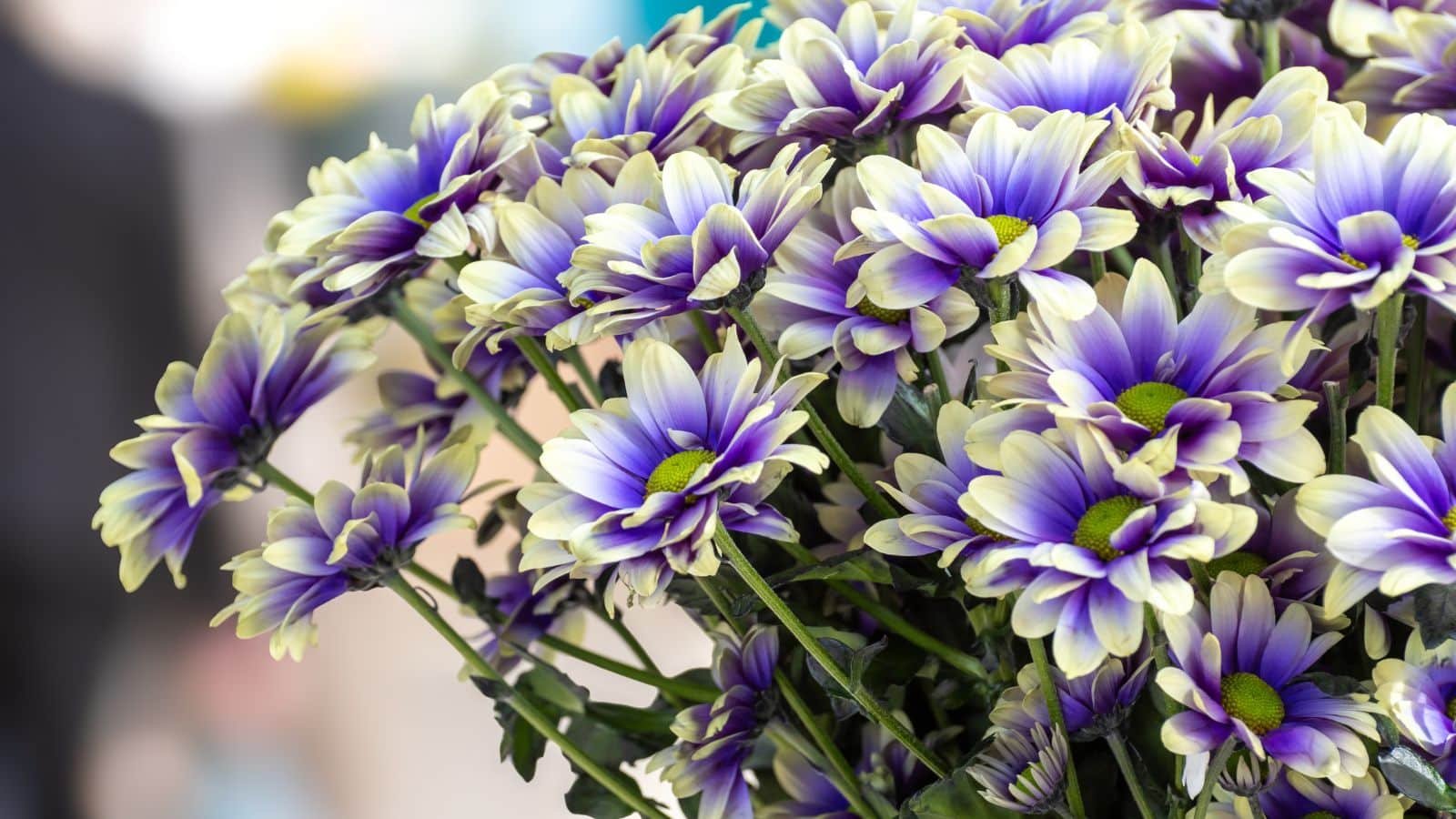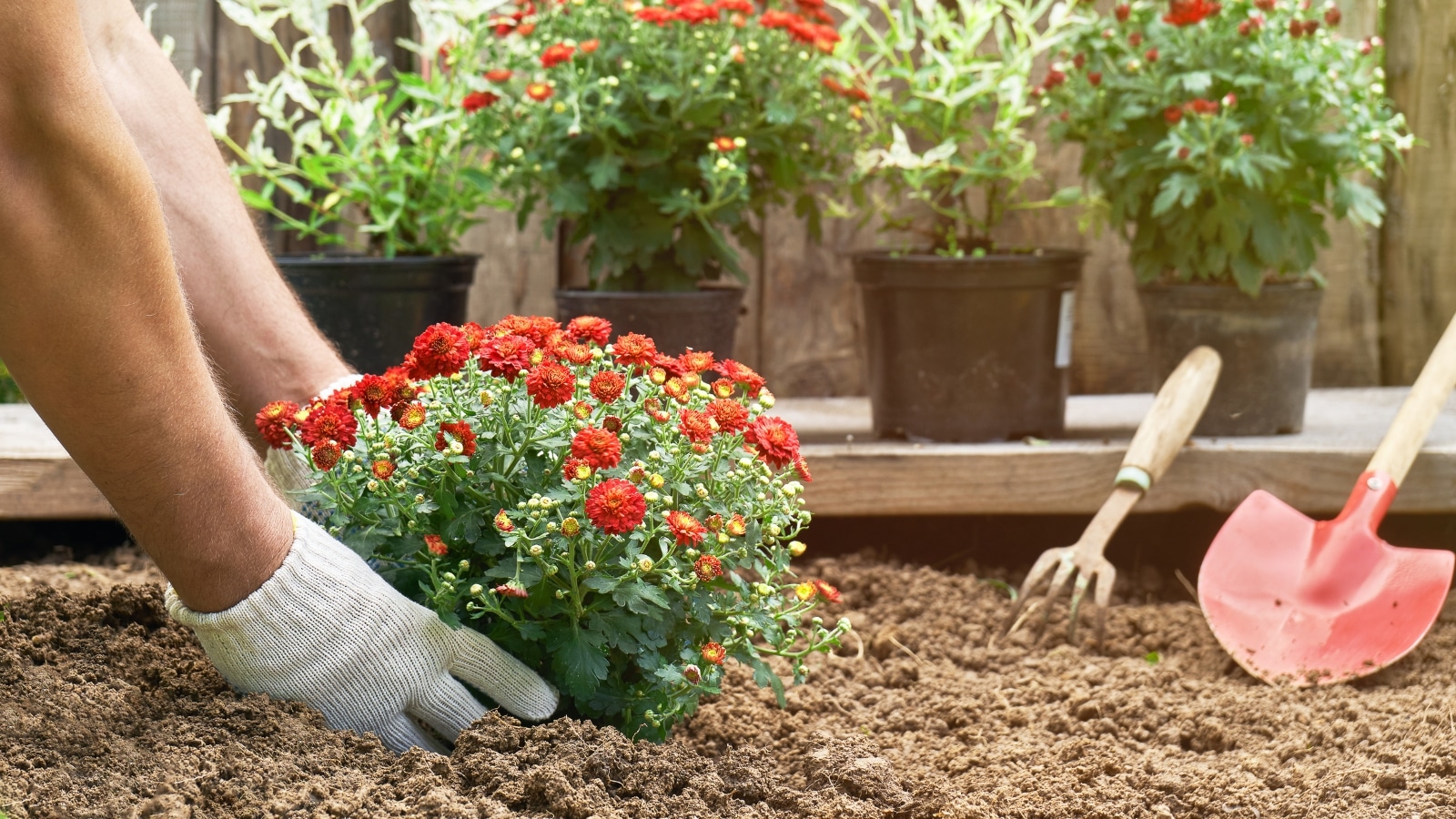How can you use native wildflowers in your Tennessee garden? If you have several trees in your yard, grow some shade-loving species and create a lovely woodland garden. Are you tired of maintaining your grass? Convert your lawn into a spectacular meadow garden! Is your space extremely limited? Grow a pollinator-friendly container garden. The possibilities are virtually limitless.
There are plenty of advantages to growing native species, including:
- Native plants require less watering because they’re already well-adapted to local growing conditions.
- They typically don’t require any extra pesticides or fertilizers.
- Native species support a variety of pollinators, beneficial insects, and songbirds.
- They’re easy to grow and low-maintenance.
- Native wildflowers are beautiful and part of Tennessee’s state heritage.
If you have space for at least one new plant in your yard this season, make it a native species. Let’s dig right in and look at 21 fantastic native Tennessee wildflowers you can choose from.
Aromatic Aster
The aromatic aster is named for its distinctively pungent scent when the leaves and stems are crushed or rubbed. This herbaceous perennial wildflower is best suited for a larger sunny garden plot with well-drained soil. It grows quickly, and its dense mounds of vegetation expand each year, sending up vigorous new stolons. It also spreads and starts easily from seed.
From spring through early fall, your aromatic aster will appear as a mass of leafy greenery. When you notice flower buds forming in the fall, get ready for a treat. Over the course of the next several weeks, even surviving the first few light frosts, these plants burst into a spectacular flowering display. The pale purple-rayed flowers have distinctive yellow-orange centers and are a clear pollinator favorite.
Black-Eyed Susan
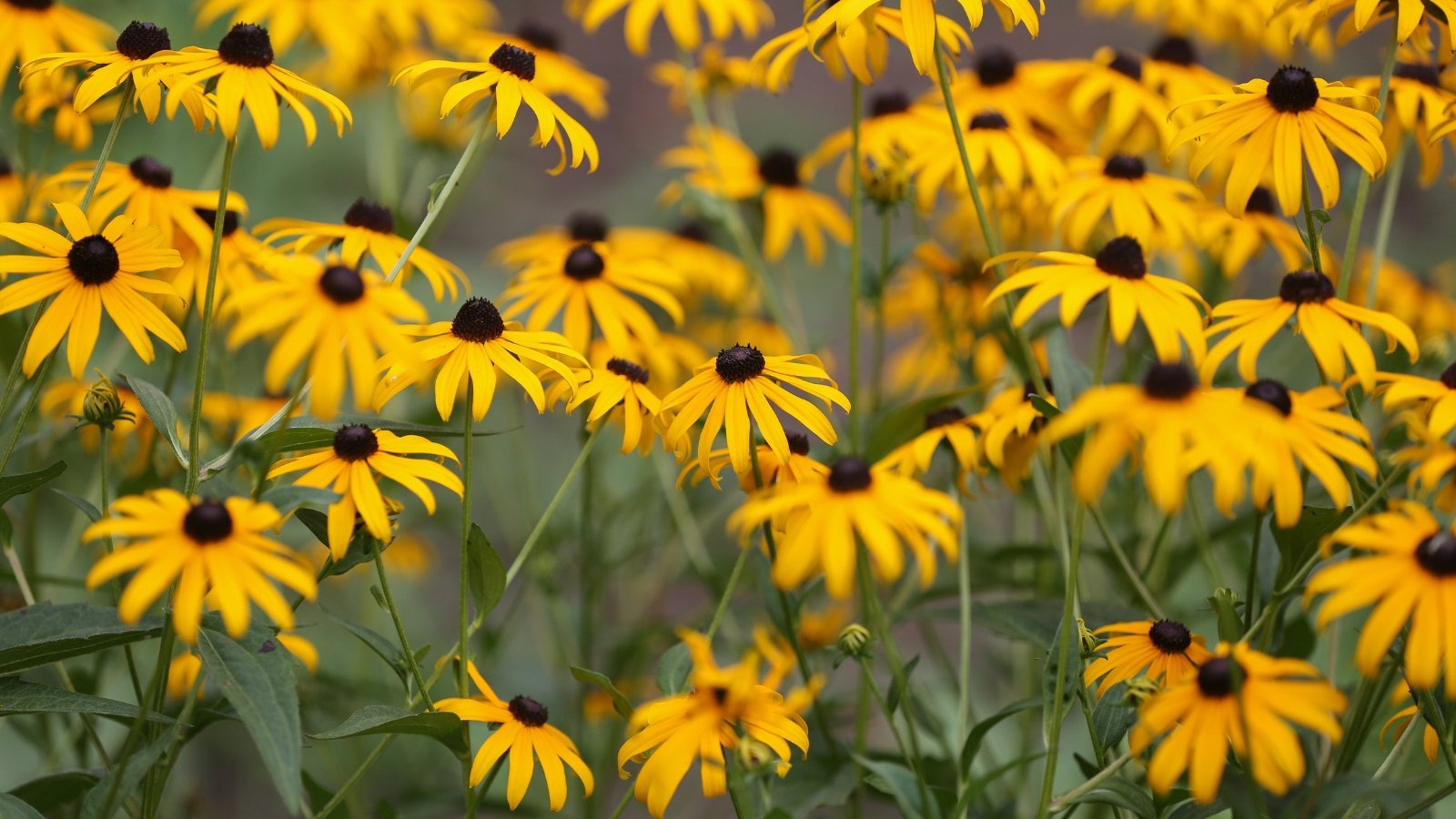
Black-eyed Susan is a remarkably easy native wildflower to grow in any garden setting. This is a short-lived perennial wildflower that is easy to start from seed and readily self-seeds for a reliable garden presence. You can even grow them as annuals because spring-sown seeds usually bloom in their first year.
All you need to grow black-eyed Susans is a sunny garden plot with average, well-drained soil. Flowering from mid-to-late summer, these cheerful flowers are sure to brighten your day. Their showy, bright yellow flowers are prolific and attract butterflies, bees, and other beneficial insects.
Butterfly Milkweed
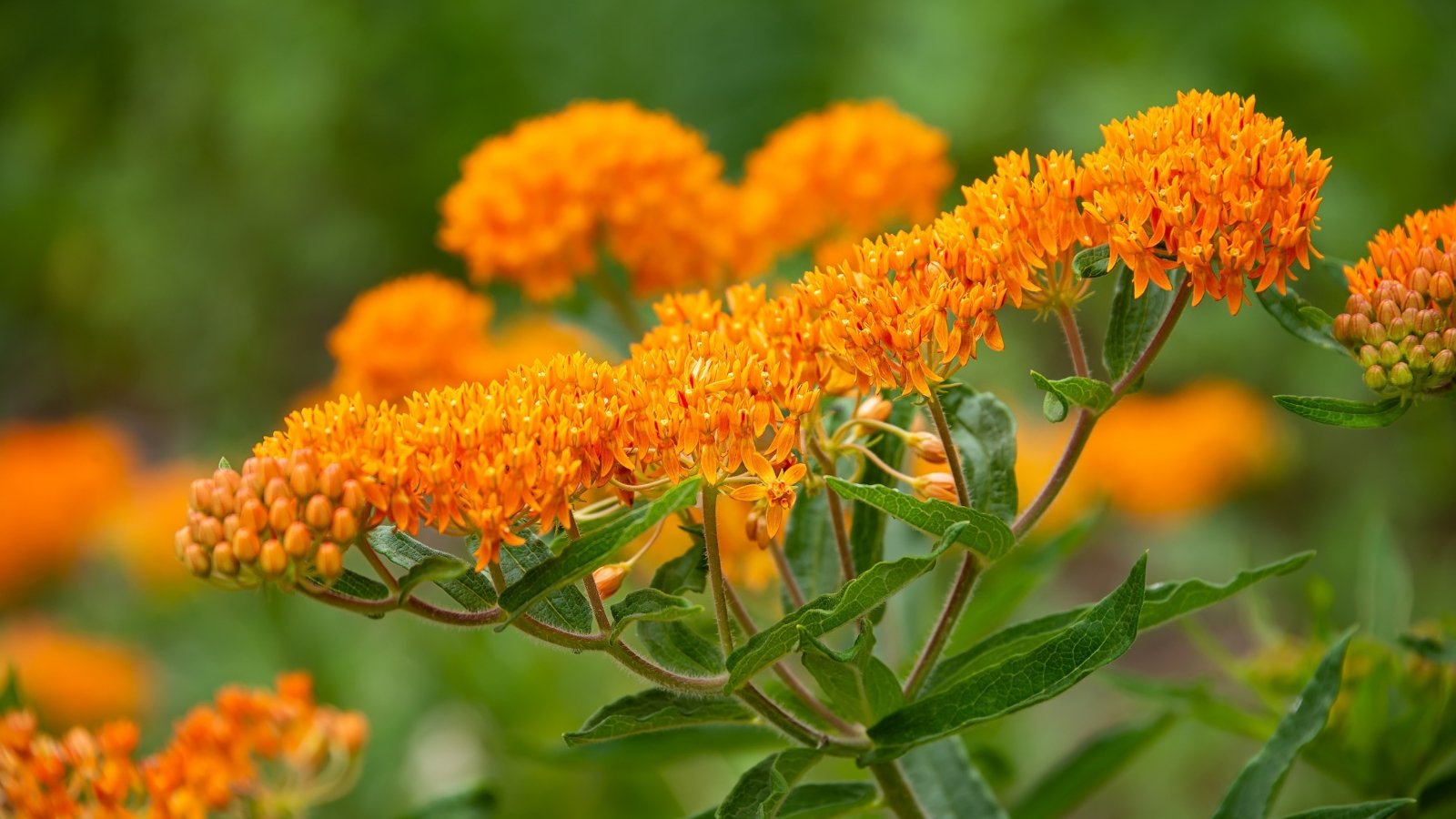
Do you want to attract pollinators to your garden? If your answer is yes, you need to grow butterfly milkweed. This is a beautiful wildflower native to the central and eastern United States, including Tennessee. It is easy to grow in a sunny spot with rich, moist, well-drained soil. If you’re short on space, you can even grow it in a container garden.
The rich, orange flowers of the butterfly milkweed bloom anytime from late spring through mid-summer. The flowers provide an excellent nectar source for all species of butterflies and many other insect pollinators.
This plant is special because milkweeds are the larval host plants that feed monarch butterfly caterpillars. If you see black, white, and yellow striped caterpillars munching on your milkweed leaves, allow them to enjoy their feast because these are the next generation of beautiful butterflies.
Cardinal Flower
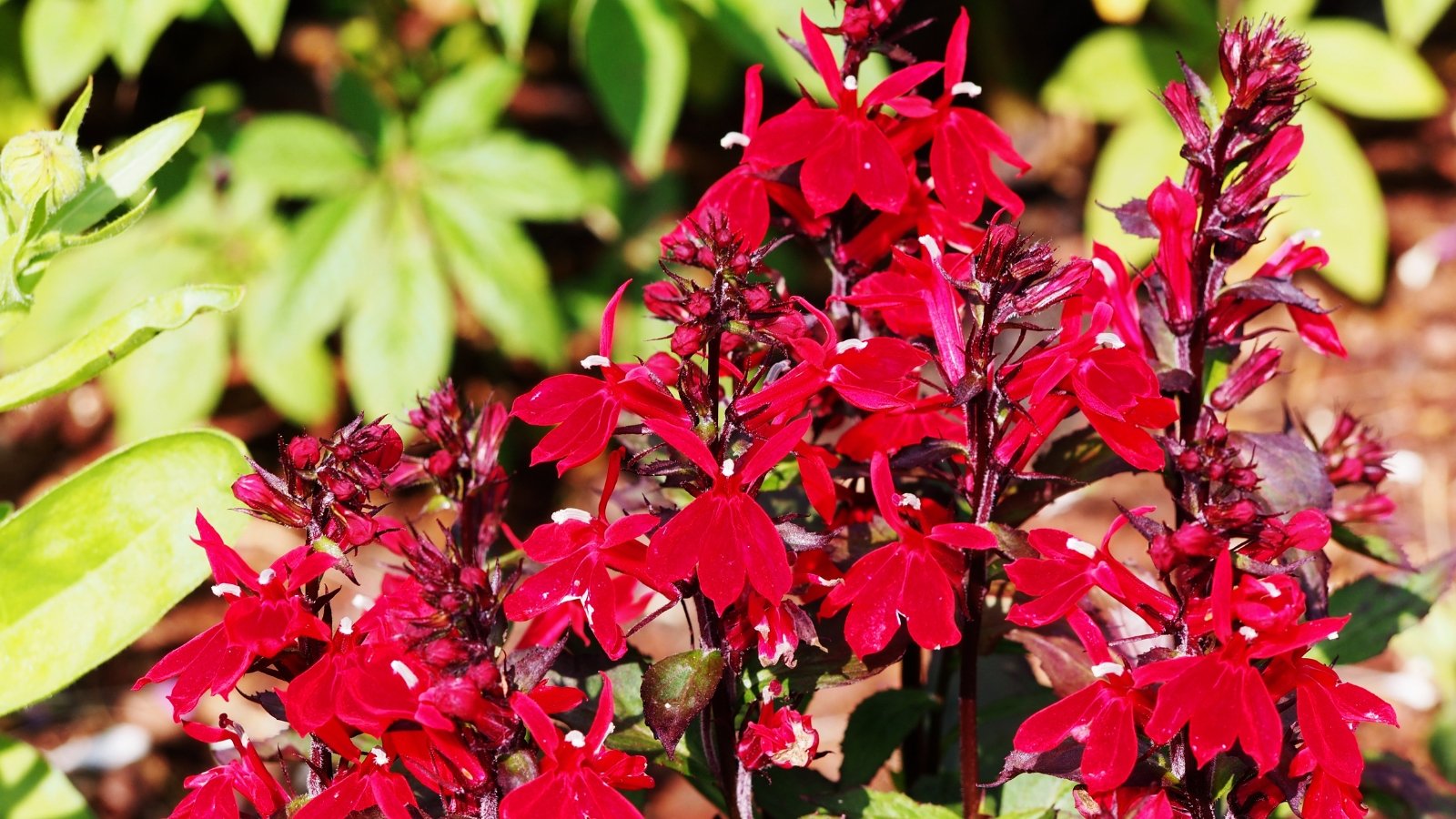
Cardinal flowers are hardy plants that thrive in moist soil. A streamside garden with a bit of shade would be the ideal planting site for these perennial wildflowers. Allow them to naturalize for a gorgeous display of late-season color.
There are plenty of wildflowers that bloom in spring and summer, but if you’re looking for a burst of brilliant color in late summer or early fall, this is a great option. The cardinal flower’s vibrant, scarlet red flowers bloom along tall, upright flowering spikes. Hummingbirds and butterflies find these flowers irresistible, and you will too.
Coral Honeysuckle
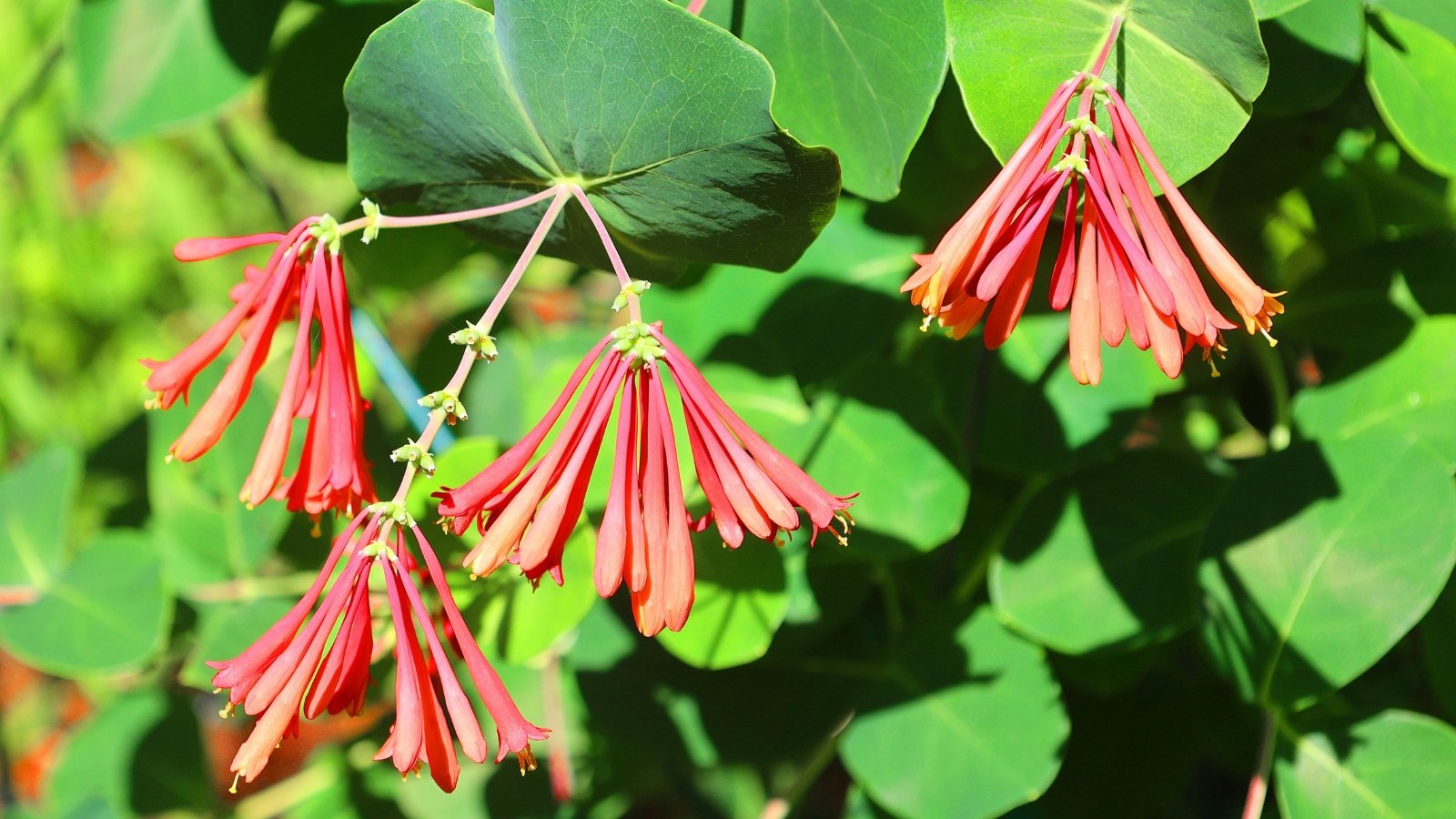
There aren’t too many native, flowering vines that provide as much colorful appeal as the coral honeysuckle. This vigorous vine will happily cover a trellis, wall, or fence, but unlike many other vines, it won’t spread away from where you plant it, so it will never become invasive or weedy. This well-behaved vine loves a sunny plot with rich, moist soil and some afternoon shade.
Coral honeysuckle has a long blooming season. Your plants may start flowering in the spring or early summer. They will take a break after flowering and then frequently rebloom later in the season for an encore performance. The thin, tubular flowers grow in small clusters. Their bright red color is very attractive to hummingbirds.
Dwarf Crested Iris
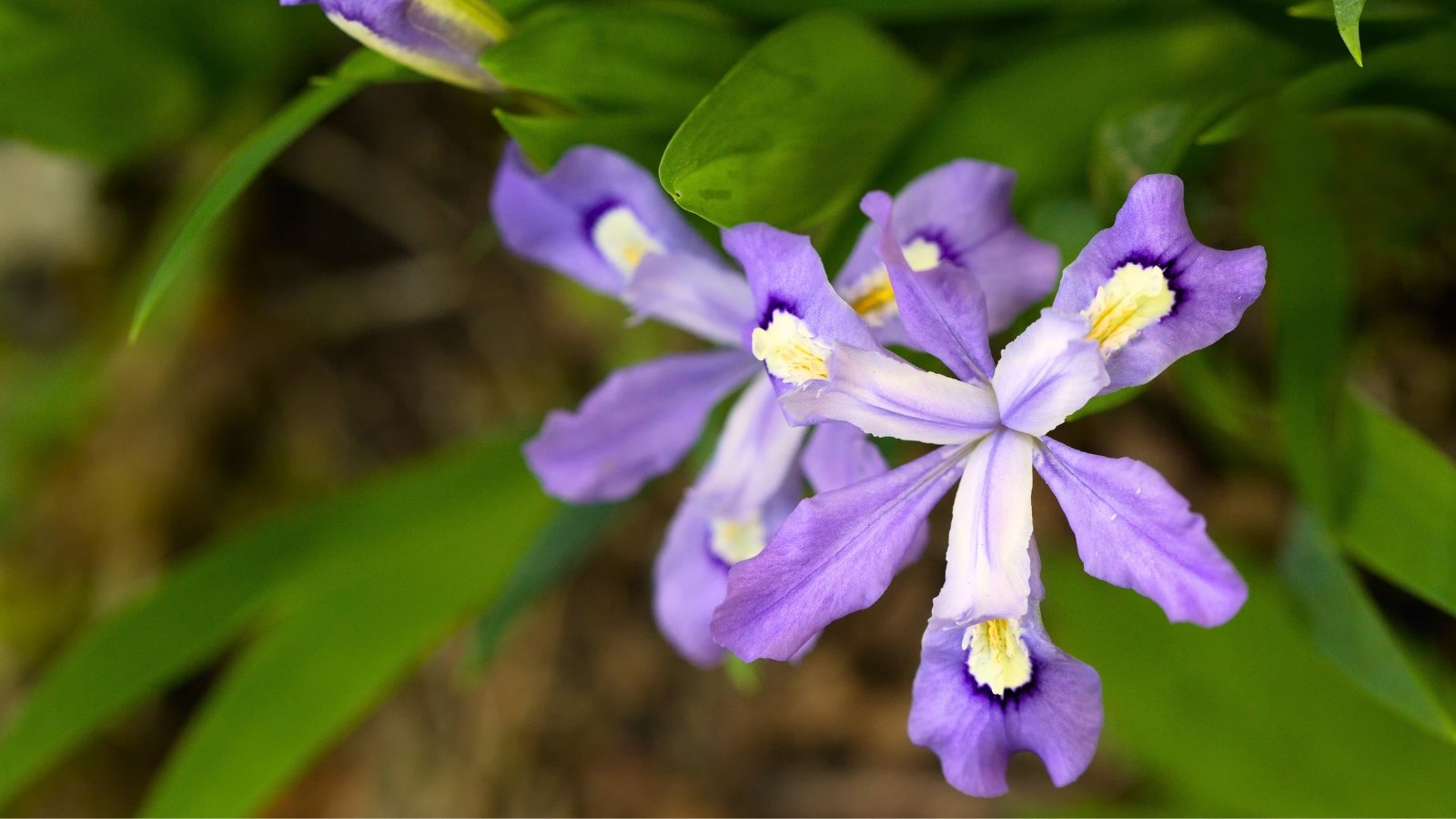
Here’s a lovely wildflower for your woodland garden. The dwarf crested iris is a low-growing plant that spreads quickly to become an effective ground cover for smaller areas. It prefers rich moist soil with partial shade, although it tolerates full sun, particularly in cooler regions, as long as it has consistently moist soil.
This spring-blooming iris adds diversity and charm to your native flower garden. Its broad, sword-like leaves stand erect in a slowly expanding patch of green. The pale purple flowers have a relatively short blooming season but create an appealing splash of early garden color.
Eastern Columbine
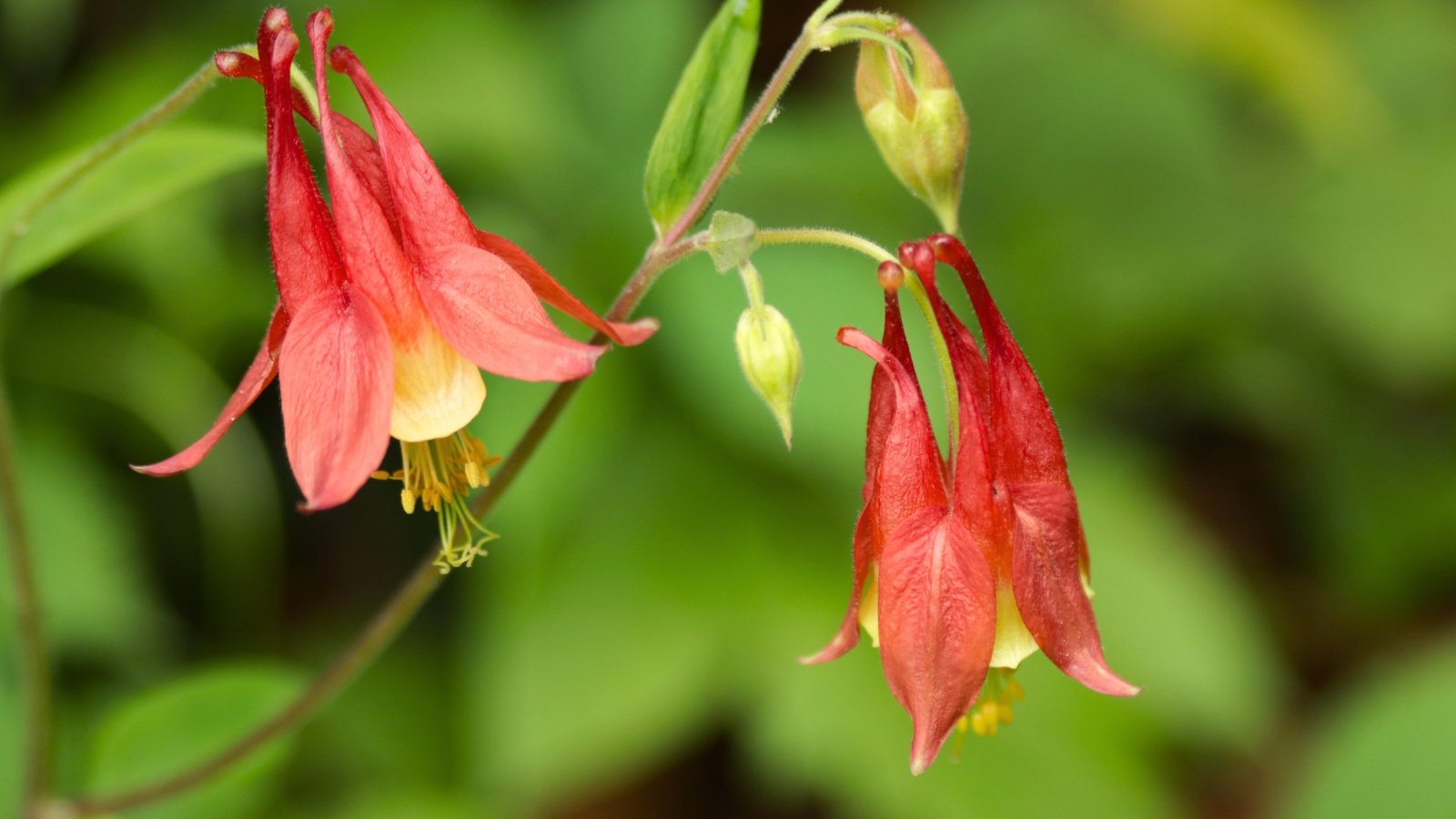
The eastern columbine is native to glades, meadows, and open woodlands of eastern North America. This spring-blooming wildflower may easily become one of your favorites. Its reliable early-season flowers are uniquely shaped. Five tubular red spurs point upwards, while the yellow mouth and prominent pollen-filled stamens face the ground.
Hummingbirds love these plants and perform elaborate acrobatics to reach the insides of the flowers. In hot and dry sites, the delicate foliage will burn and brown, possibly dying back and going dormant until the following spring. In cooler, shadier, moist locations, the foliage may persist throughout the growing season. The eastern columbine is a perfect addition to your cottage garden, hummingbird garden, or woodland shade garden.
Foxglove Beardtongue
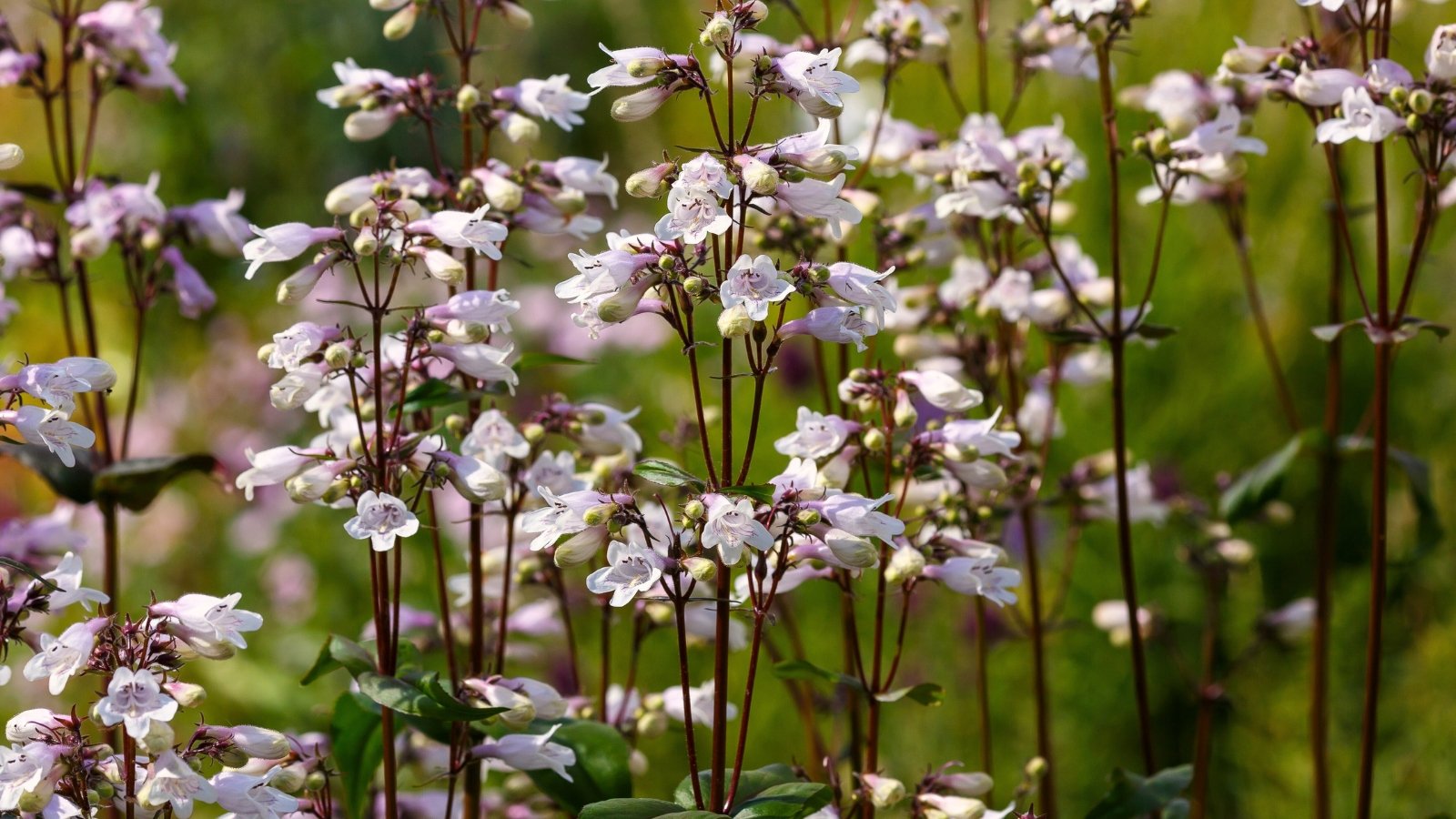
Here’s a low-maintenance wildflower that looks great anywhere you grow it. The foxglove beardtongue is an herbaceous perennial that tolerates a wide variety of growing conditions but does best with plenty of sunlight and well-drained soil.
Foxglove beardtongue, also simply called beardtongue, is native to the eastern and southeastern United States. In the spring, it displays loose spiky clusters of trumpet-shaped white flowers. Bees adore these flowers, and hummingbirds and butterflies also visit frequently. Deer and rabbits won’t bother your beardtongues, so you won’t need to worry about protective fences and cages.
Great Blue Lobelia
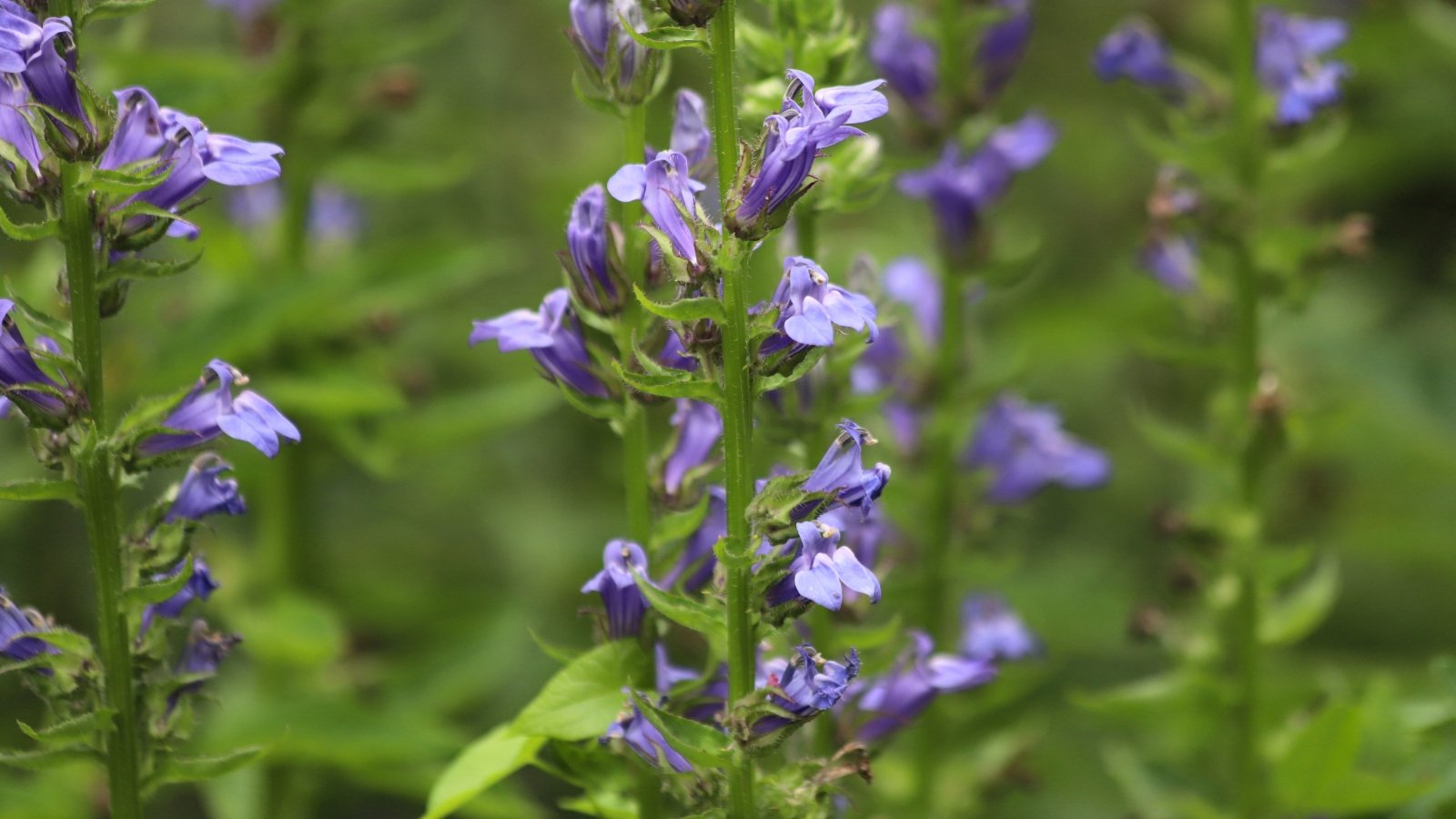
The great blue lobelia, also known as the blue cardinal flower, is a moisture-loving perennial for your rain garden or pollinator garden. In cooler regions, give it a location with full sun, and in the warmer parts of its range, it appreciates some afternoon shade to help protect it from drying out.
If you’re looking for a wildflower to provide a dazzling mid to late-summer display, look for further than the great blue lobelia. It produces massive spikes of pale lavender-blue tubular flowers with prominent lower lips. Allow your plants to self-seed and spread to form attractive colonies in a spacious naturalized meadow garden.
Lanceleaf Coreopsis
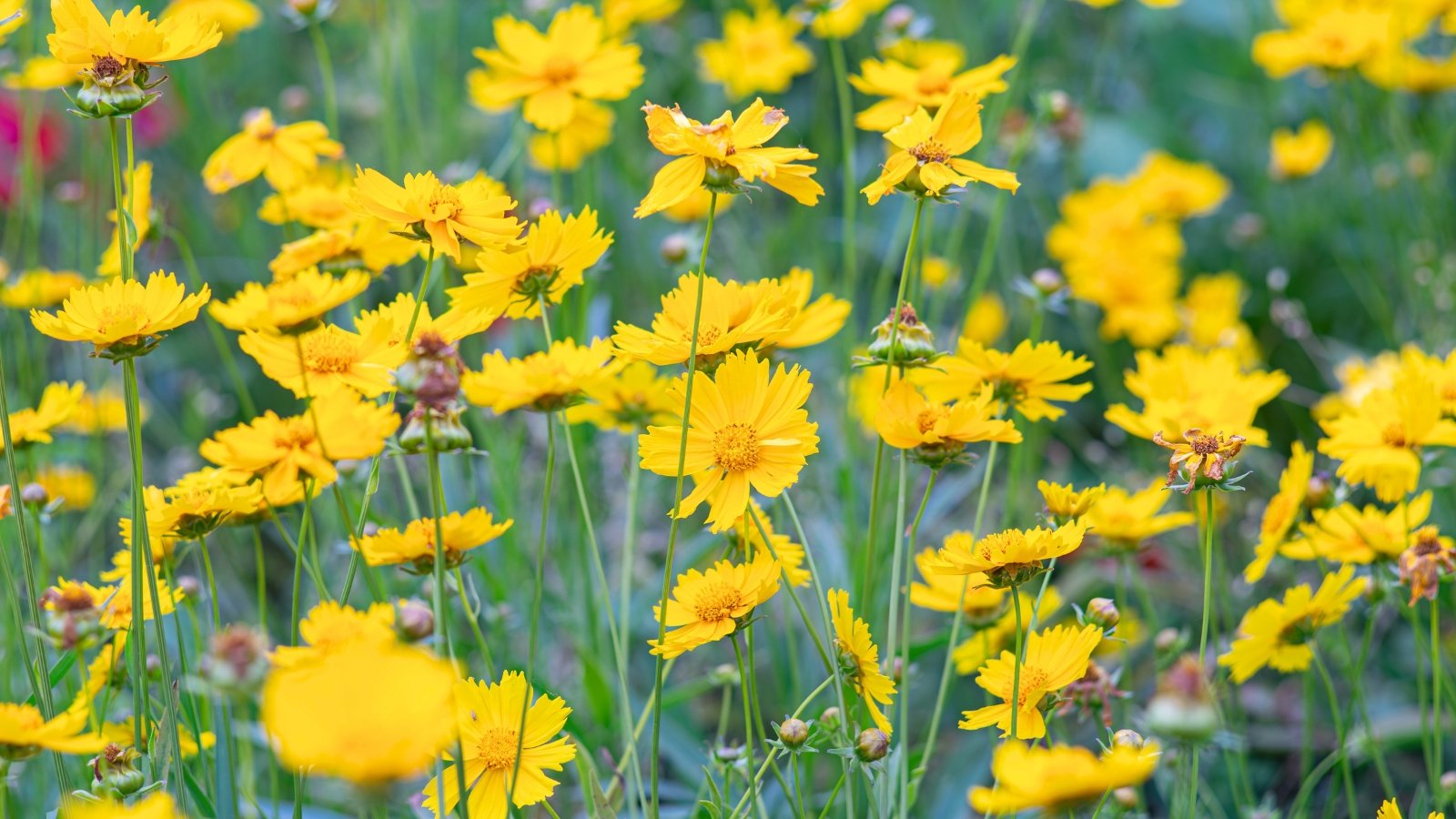
The lanceleaf coreopsis is a vigorous herbaceous perennial native to central and eastern North America. This wildflower grows best in full sun with well-drained soil. Grow it along a border, in your pollinator garden, or mixed with other grassland wildflowers in a pocket prairie.
The bright yellow flowers of the lanceleaf coreopsis resemble miniature sunflowers and are good for cut flower arrangements. They bloom from late spring through mid-summer and are frequented by butterflies, bees, and birds. These plants have excellent drought resistance and will freely self-seed in ideal conditions to form large colonies.
Nodding Onion
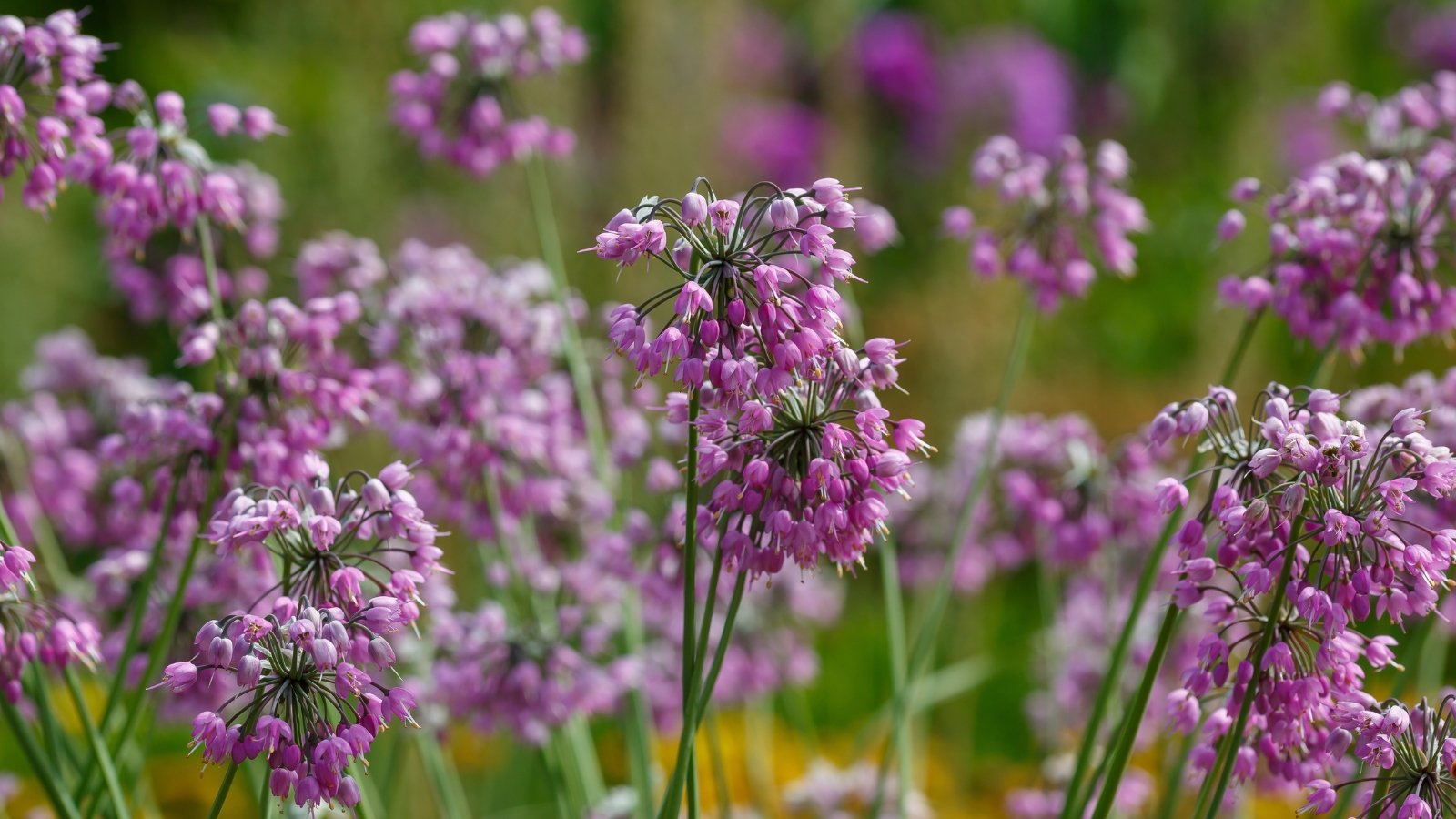
The nodding onion is an attractive member of the amaryllis family native to central and eastern North America. It has snowy nodding umbels of pink or white bell-like flowers. The thin, grass-like leaves blend in nicely with the surrounding vegetation and add a touch of diversity.
Grow your nodding onion along a flowering border so you will be able to see it and enjoy its delicate beauty. The thin leaves tend to blend in with the surrounding vegetation, and you may forget your nodding onion is there until it blooms the following summer. An assortment of pollinators visit the flowers, and deer won’t bother these plants.
Oxeye Sunflower
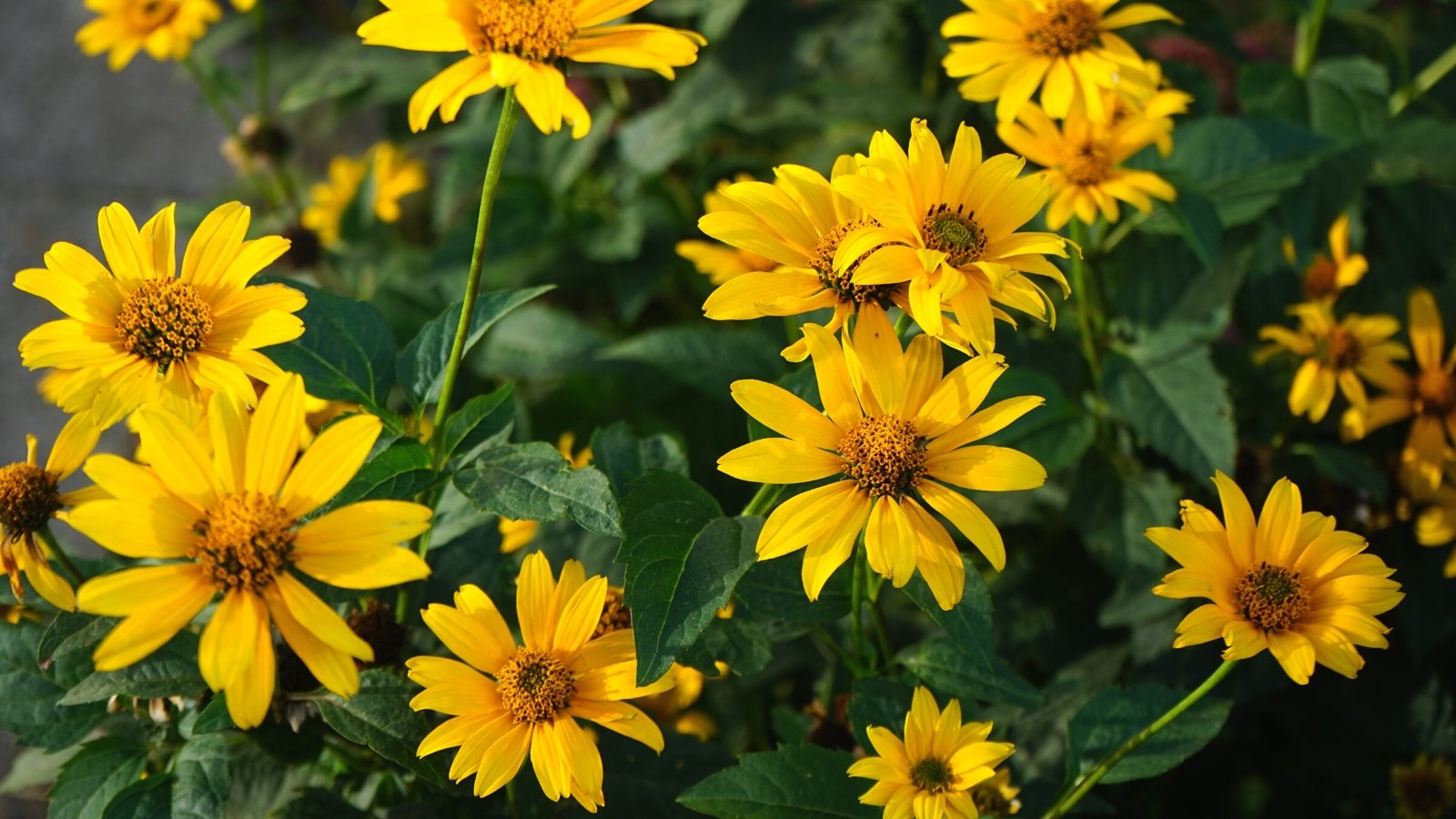
The oxeye sunflower is an easy-to-grow wildflower that can reach up to six feet tall. It grows best in full sun with moist, well-drained soil. Since this is a taller plant, it’s a good addition to a pocket prairie or meadow garden, surrounded by a colorful drift of other wildflowers. Place it towards the center or rear of your garden so it won’t block your view of smaller species.
Oxeye sunflower is a native sunflower with three-inch wide flowers. Healthy plants produce several blooms that open in succession over several weeks. The yellow-orange flowers attract bees, butterflies, and a variety of other pollinators. After flowering, the seeds help feed hungry songbirds that perch on the stems and pick apart the drying seedheads.
Purple Coneflower
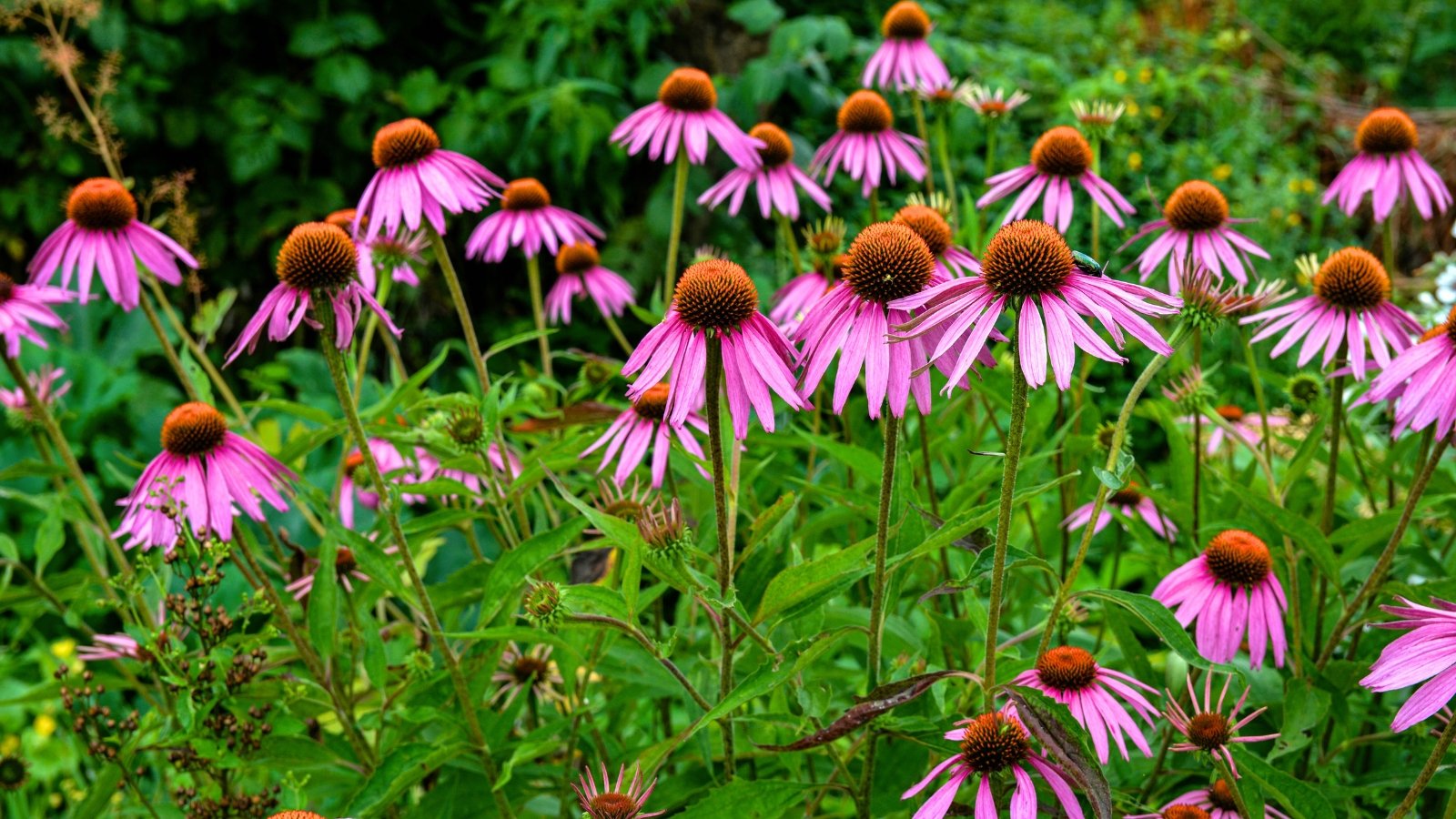
The purple coneflower is an all-around winner when it comes to Tennessee native wildflowers. This plant is easy to grow in a variety of conditions, low maintenance, attracts pollinators and songbirds, makes great cut flowers, and it’s simply beautiful. Grow it in your cottage garden, pocket prairie, meadow garden, pollinator garden, or rock garden.
The purple coneflower has a long blooming period, starting in late spring and continuing through summer. The large flowers can be up to five or six inches across, with elongated pale pinkish-purple petals and a spiky brownish-orange central disk. These extremely showy flowers are a surefire hit with pollinators and songbirds alike.
Rose Verbena
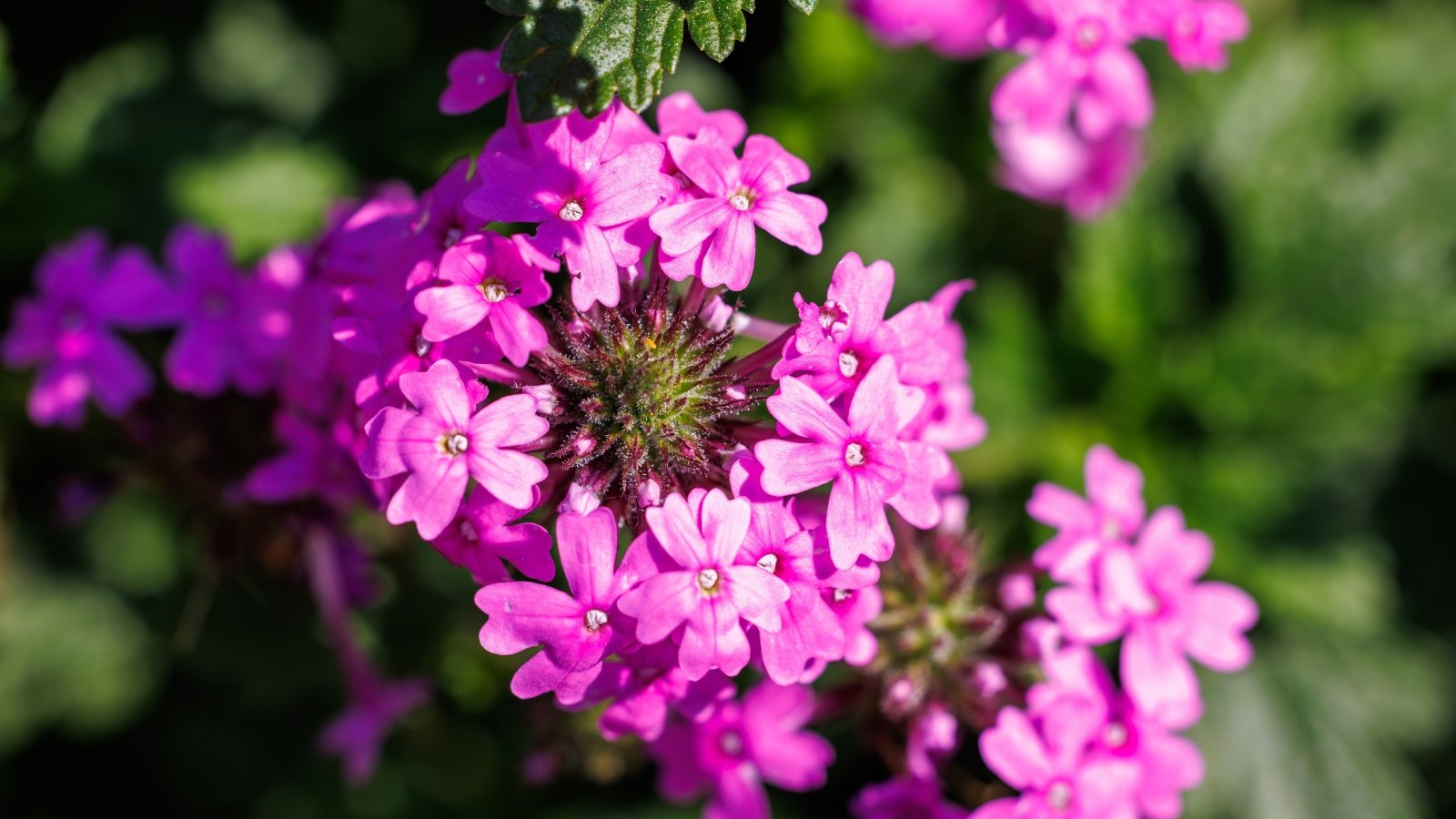
If you’re looking for a wildflower to act as a ground cover for your native Tennessee garden, check out the rose verbena. This clump-forming perennial has geranium-like leaves with a fuzzy look for interesting textural appeal. The rounded clusters of pale purple or pink flowers bloom throughout the summer for long seasonal appeal.
Grow rose verbena in your pollinator-friendly landscape. The flowers attract butterflies and other beneficial insects to your landscape. You’ll want a sunny plot in your rock garden or xeriscape. This plant needs well-drained soil and tolerates generally poor soil quality. It’s a great option for container gardens and hanging baskets.
Rough Blazing Star
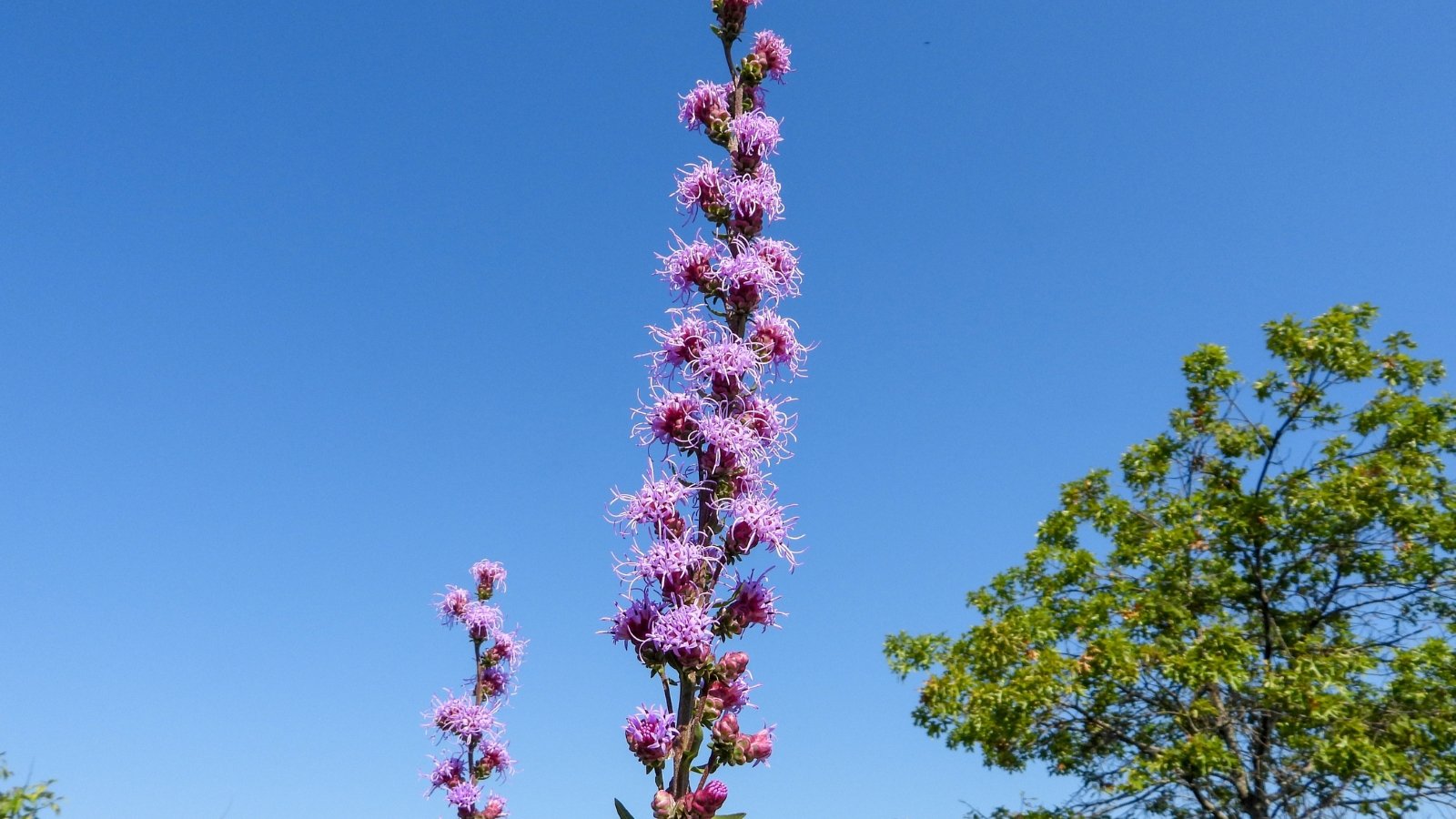
The rough blazing star is a native perennial wildflower from tallgrass prairies and rocky glades of eastern and central North America, including Tennessee. This blazing star prefers full sun or light shade and well-drained soil. You will definitely want to include this plant in your wildflower garden if you’re hoping to attract butterflies. Butterflies, pollinators, and small songbirds all love blazing star flowers.
Rough blazing star blooms in summer and early fall. The flowers form along an elongated spike. The individual flowers appear as fluffy tufts of purple, loosely spaced along the spike, blooming from the top down. If you have a large stand of blazing stars, leave some spikes for the pollinators and use a few for your cut flower arrangement.
Slender Mountain Mint
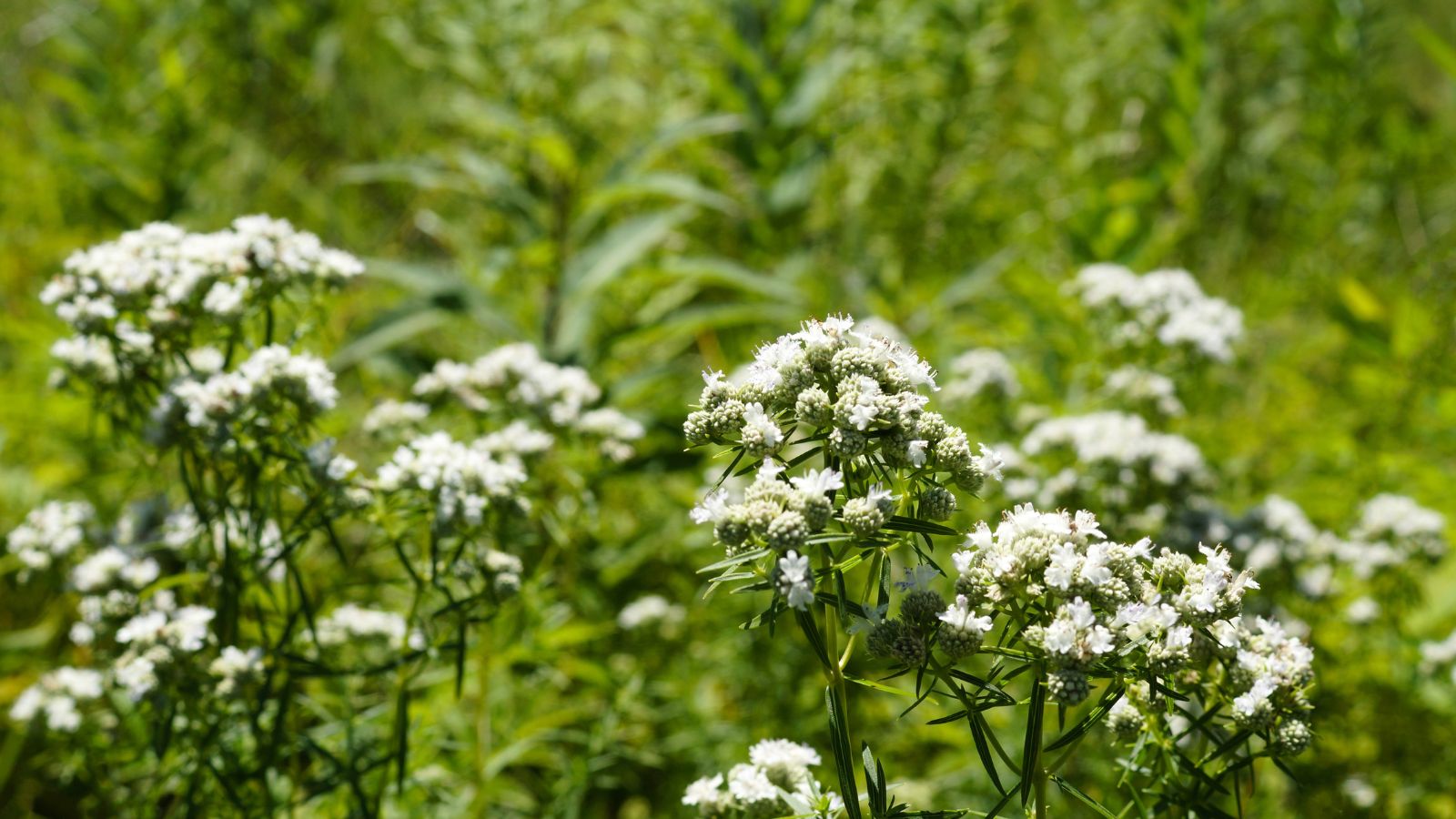
The slender mountain mint, also known as narrow-leaf mountain mint, is a pleasantly scented member of the mint family. This plant, like most mints, is a vigorous grower that spreads rapidly by stolons. However, it’s a native North American species. Choose a larger naturalized area, grow it in a container, or be prepared to do some regular thinning to keep your mint plants in check.
This mountain mint is easy to grow and typically reaches a height of about three feet. It has narrow, minty-smelling leaves that aren’t bothered by browsing deer or rabbits. This perennial wildflower has a long blooming season and can flower continuously from mid-summer until fall. Its dense clusters of tiny white flowers are a pollinator magnet and make a nice addition to cut flower arrangements.
Swamp Milkweed
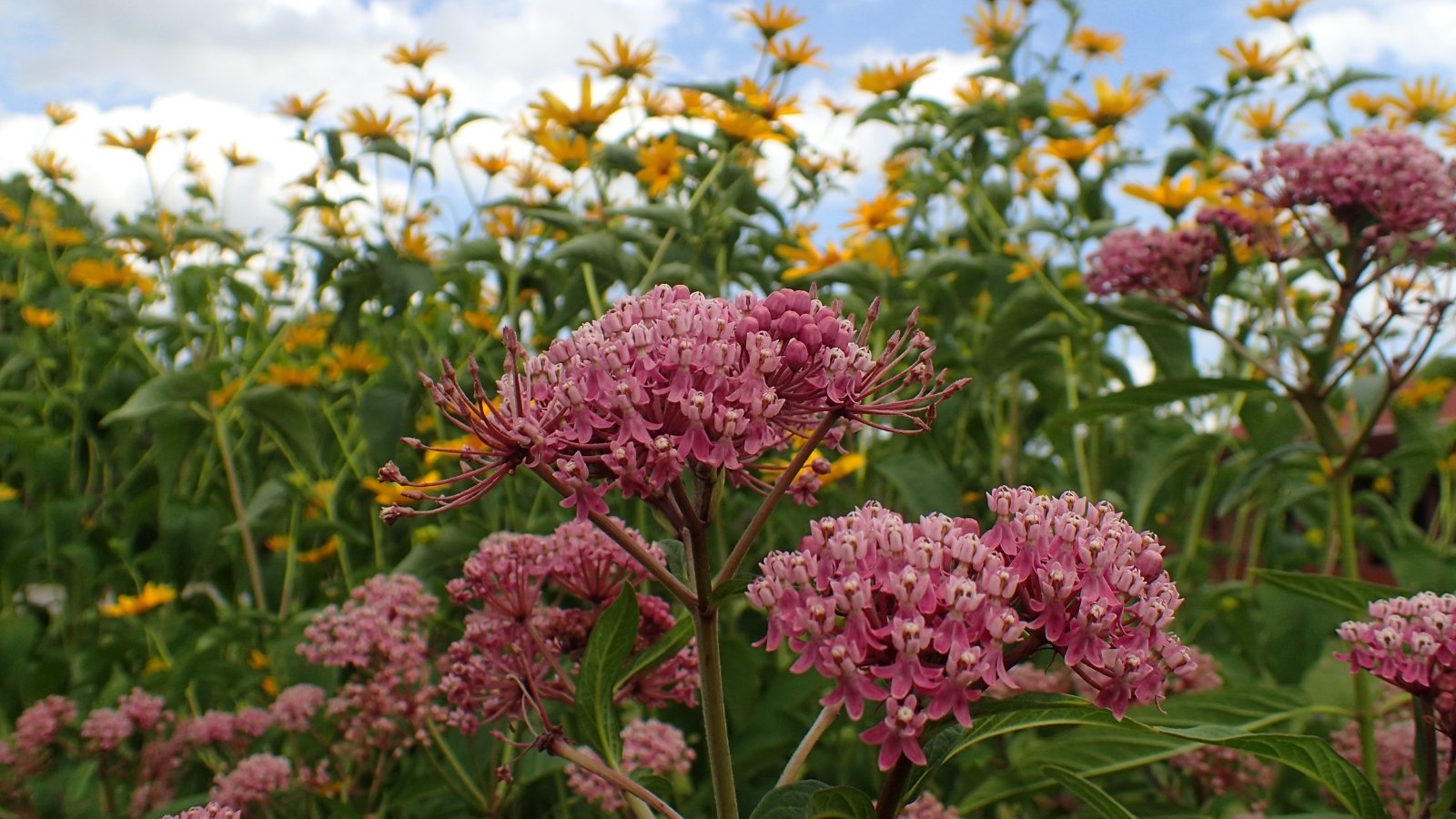
There are many beautiful native milkweeds and as its name implies, this species loves wet soils. The swamp milkweed grows along streamsides, in floodplains, and moist meadows of the eastern and central United States. It performs best in full sun but tolerates light afternoon shade, particularly in hotter or drier parts of its range.
While some milkweeds peak in the spring, swamp milkweed doesn’t bloom until mid to late summer. Its showy flowers attract many pollinators, especially butterflies. These colorful flowers are a rich pink color and form several densely clustered flowerheads per plant. Swamp milkweed is also a valuable larval host plant for the monarch butterfly caterpillar.
Virginia Bluebells

If you go walking through moist woodlands on a warm, early spring day, you might be treated to the sight of a board swatch of Virginia bluebells in peak bloom. You’ll hope to have a camera handy because these spectacular wildflowers put on a wonderful show. If you have a shade garden with rich, moist soil, add some Virginia bluebells and some other spring ephemeral wildflowers to enjoy your own dramatic spring wildflower display.
Virginia bluebells are native to central and eastern North America. Their nodding, bell-like flowers start as pink buds and change to purplish blue as they open. After flowering, these perennials go dormant for the rest of the summer, but don’t worry, they’ll re-emerge the following spring. Plant them with some other shade-loving perennials, such as hostas and ferns, to fill in the gaps left behind by the dormant foliage.
Whorled Milkweed
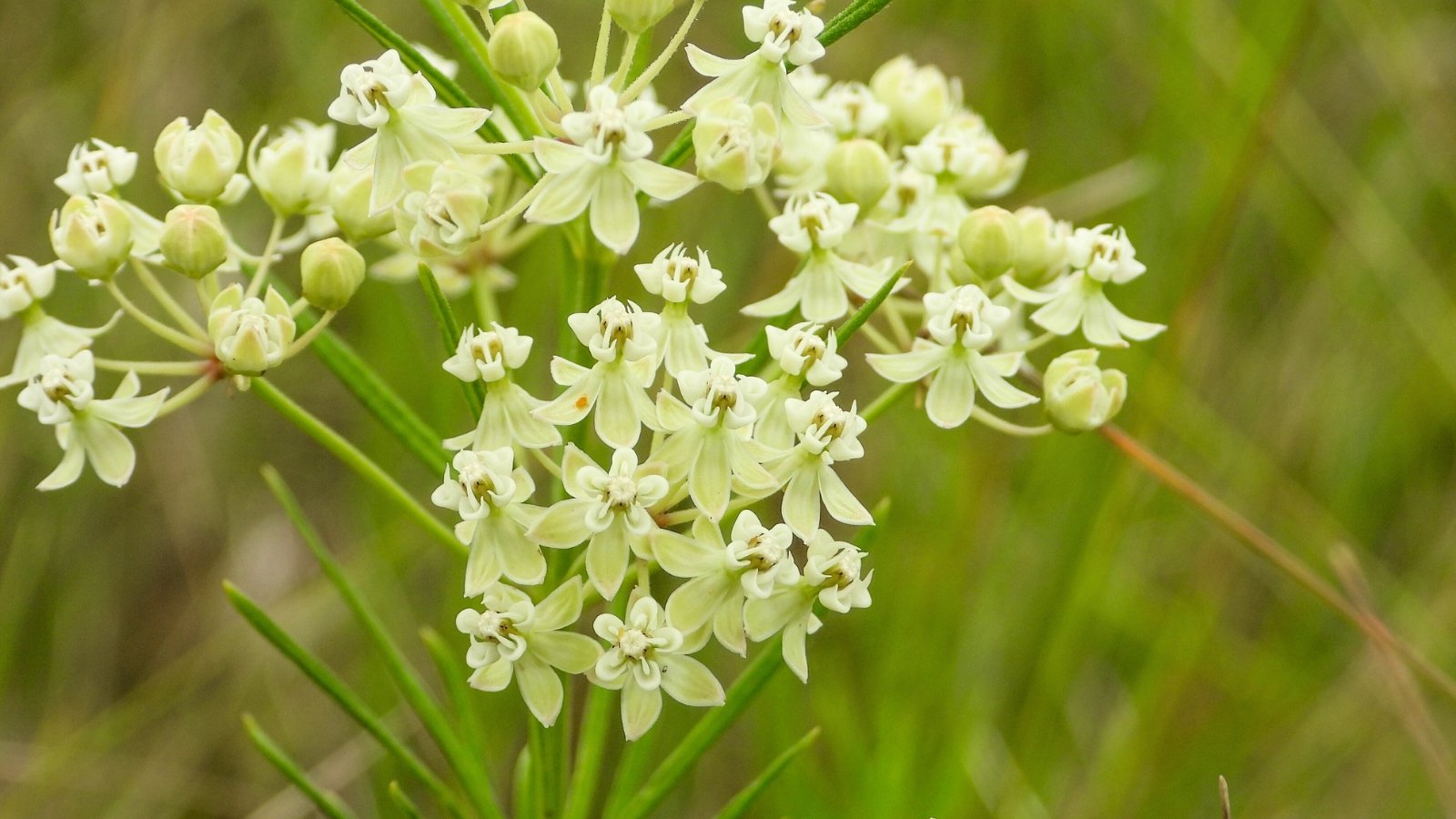
Whorled milkweed is a versatile drought-tolerant milkweed species. This native perennial grows in sunny locations with rich, well-drained soil. Use it in your butterfly garden or meadow garden, or grow it along the edge of your xeriscape garden where its fine foliage can be fully appreciated.
This attractive milkweed has upright stems lined with thin, two to three-inch-long leaves, giving the stems a loose bottlebrush appearance. Its clusters of white flowers bloom from mid to late summer, attracting butterflies, bees, and hummingbirds. Whorled milkweed will self-seed and spread by rhizomes in ideal conditions but won’t become invasive. Allow a group of these plants to naturalize for the best visual appeal.
Wild Bergamot
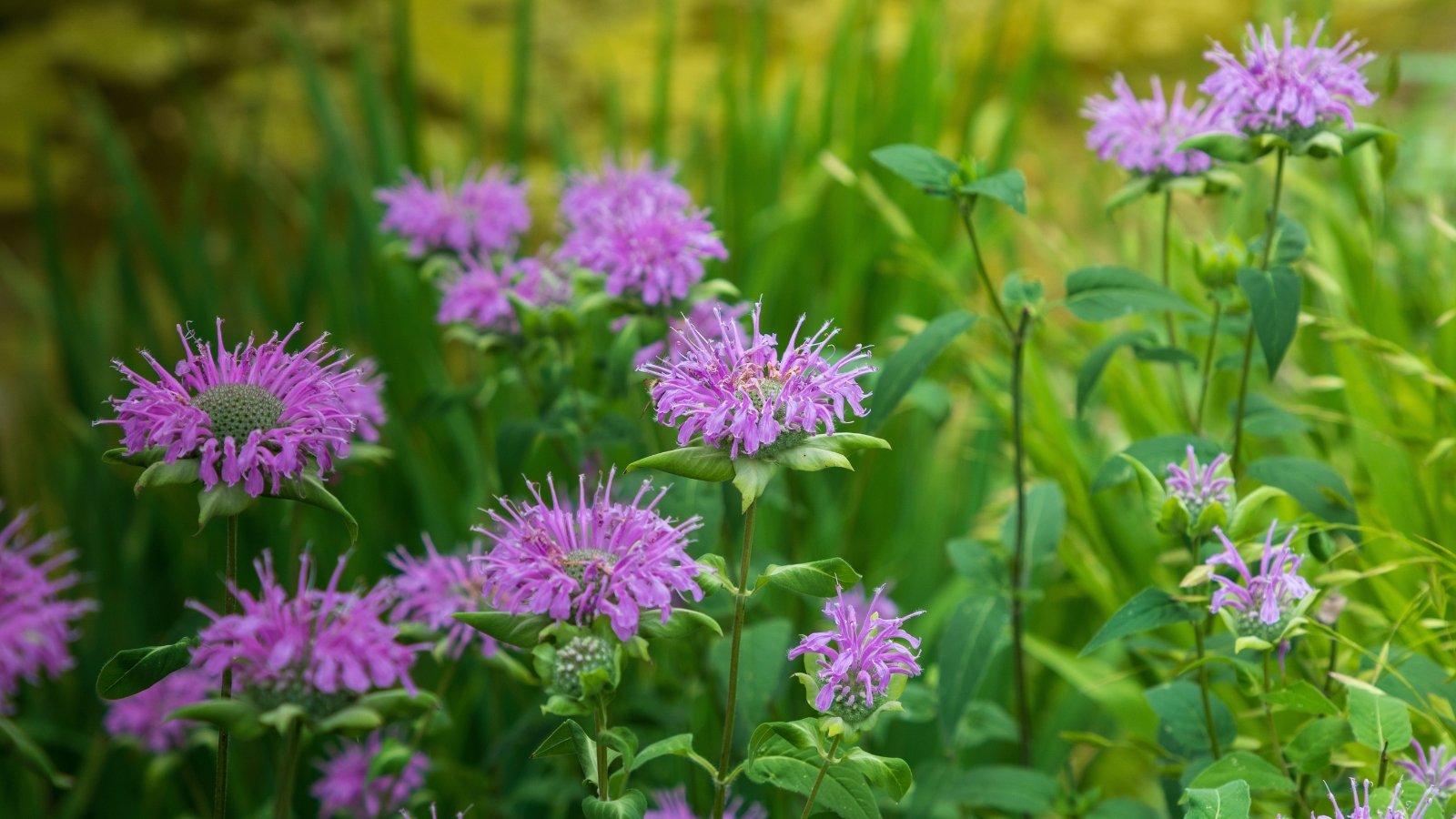
Wild bergamot is a member of the mint family with fragrant flowers and leaves. This versatile perennial can be grown in a container garden or raised bed. Use it in your herb garden or as a companion plant to attract pollinators and deter deer. Grow it in your native garden to attract hummingbirds and enjoy its showy flowers.
Wild bergamot blooms through the summer. Its thin, tubular flowers form a rounded cluster of pale purplish-pink atop leafy stems. This plant is susceptible to powdery mildew, which can cause the leaves to have a powdery, gray, or splotched appearance, especially late in the season. Keep your bergamot patches thinned to improve airflow and reduce fungal diseases.
Woodland Phlox
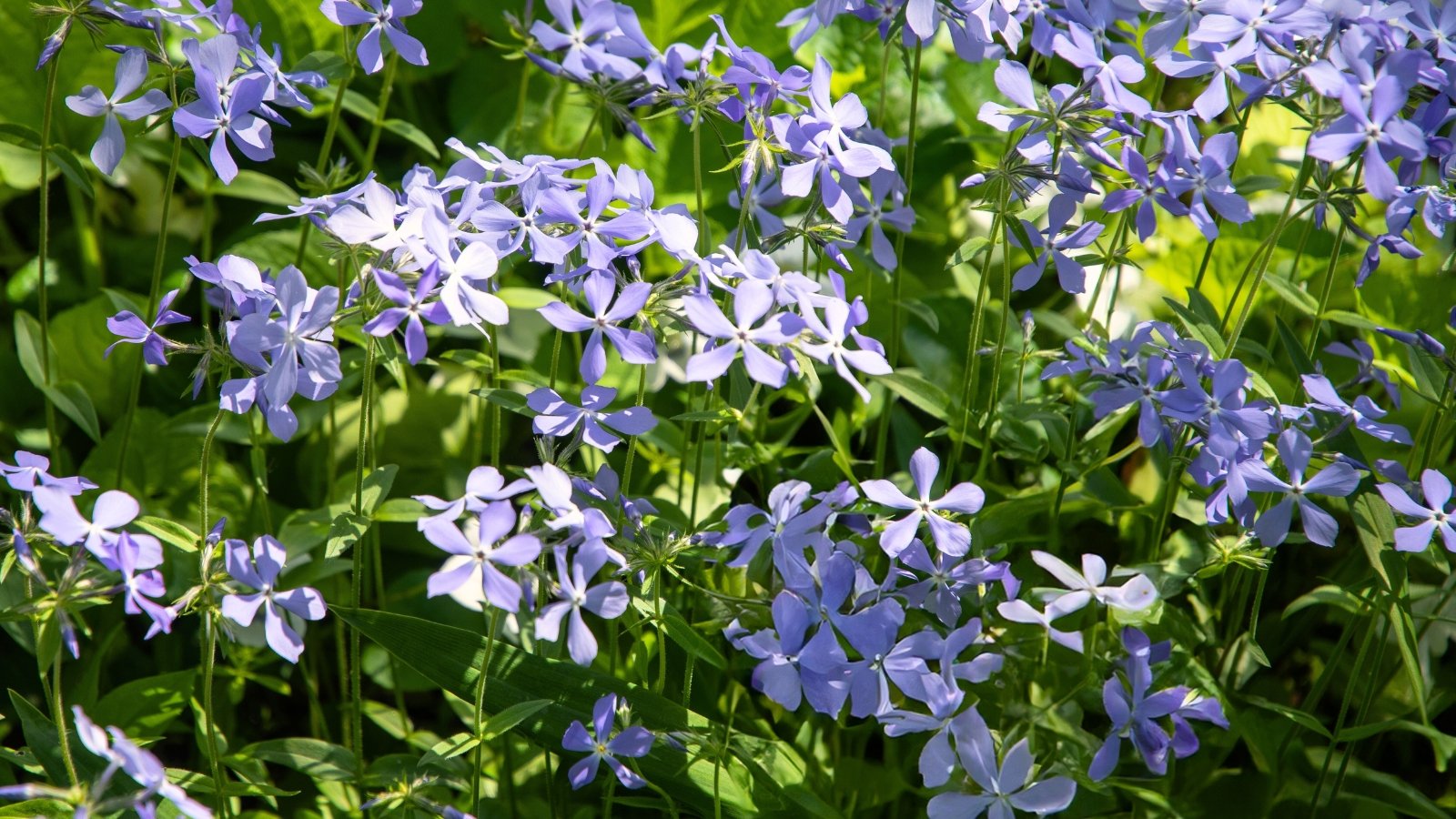
Woodland phlox is a beautiful wildflower native to moist, open woodlands and forested edges of the central and eastern United States. This plant loves the shade and can be grown in any shaded plot with fertile, well-drained soil. Allow it to naturalize and spread by self-seeding, and you will soon have a showy stand.
Woodland phlox, also known as wild sweet William, is a spring bloomer with abundant pale purple flowers. Each flower has five evenly-spaced rounded petals and a slight sweet fragrance. This is an ideal plant to attract butterflies and hummingbirds to your shade garden. In hot or dry locations, the foliage dies back after flowering, so you can grow ferns and other shade-loving plants in the same general area to fill in during the summer and fall.
Frequently Asked Questions
Yes! Tennessee encompasses USDA Plant Hardiness Zones 6, 7, and 8. If you live in a nearby state with similar ecoregions, you can easily use the same plants in your landscape.
You can sometimes find native species at larger nurseries and garden centers. If you want a wider selection of native species, check for specialized native plant growers in your area. Ask at a local garden club, arboretum, or botanical garden for grower recommendations.
Check reputable seed companies for native wildflower seeds. Make friends with your gardening neighbors or attend plant swaps. Finally, don’t dig wildflowers from the wild as this disturbs natural populations and may be illegal.
You have a couple of options when you start wildflowers from seed. Direct sow perennial wildflowers in late fall and they will overwinter and sprout the following spring. You can also direct sow wildflower seeds in early spring. If you want to get a head start, sow seeds indoors in late winter and allow them to germinate in the warmth of your home. When your seedlings have grown several inches tall and all danger of frost has passed, transplant your tender seedlings outdoors to a protected location.
Both spring and fall are great seasons for transplanting wildflowers. Fall is an ideal time to thin and divide larger clusters of mature plants. You can then transplant your divided perennials to new locations or share them with your gardening friends and neighbors.

